HAWAII -Of Gods & Men
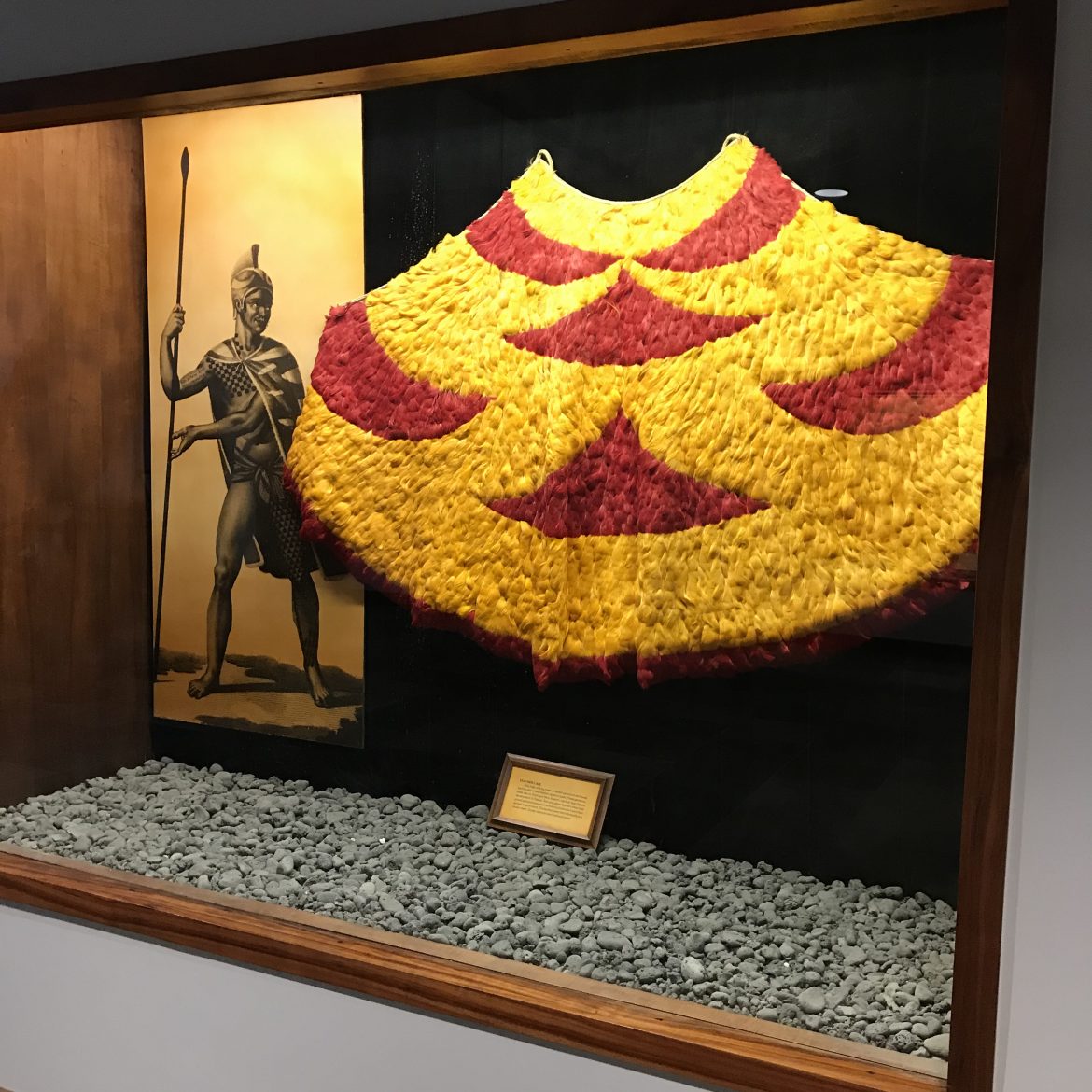
A barefoot man wearing a loincloth and a traditional short cape made of ti leaves walked by me as if deep in thought. When I turned to watch him, I could see his black hair cut high on the sides and left long on top to fall around his shoulders. Without looking to right or left he strode away from the Great Wall defining the Pu’uhonua, Place of Refuge, during ancient Hawaiian times.
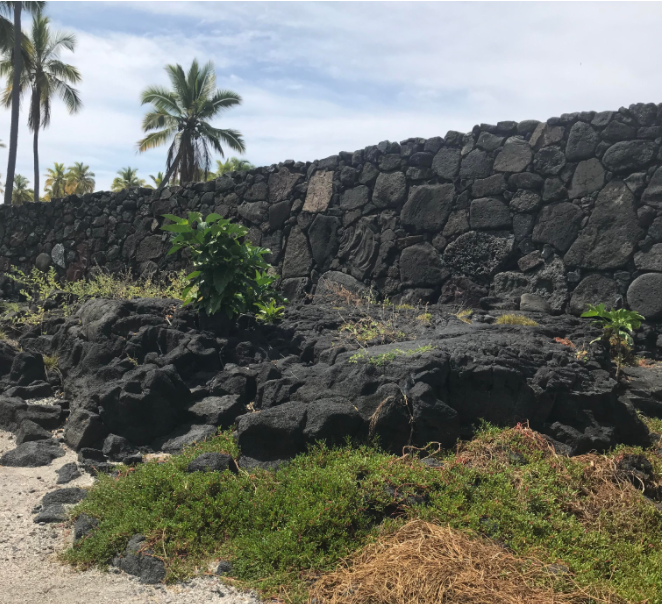
He projected power and I could not help but wonder if he was a chief or priest. and perhaps the descendant of those chiefs of old who wore magnificent yellow and red capes and headdresses of bright bird feathers.

The Pu’uhonua is half of the National Historical Park on the Big Island. Established in 1961 the area comprises the Place of Refuge and Royal Grounds together marking a place of spirit, power and safety. From the time of Hawaiians’ arrival from Tahiti in the 900s until 1819, the year King Kamehameha died and the concept of kapu began to be abolished, the area was the refuge for those who broke these laws – a woman eating with a man, catching fish out of season, or casting his shadow on royalty. The unfortunate soul who committed one of these crimes had to flee on foot to the coast and attempt to swim to this low-lying peninsula of rough lava open to the sea. If he survived the ordeal, he could be absolved by a priest. The area had an additional function: serving as a sanctuary for children, elders and noncombatants during time of war as well as defeated warriors who would wait until the end before returning home.
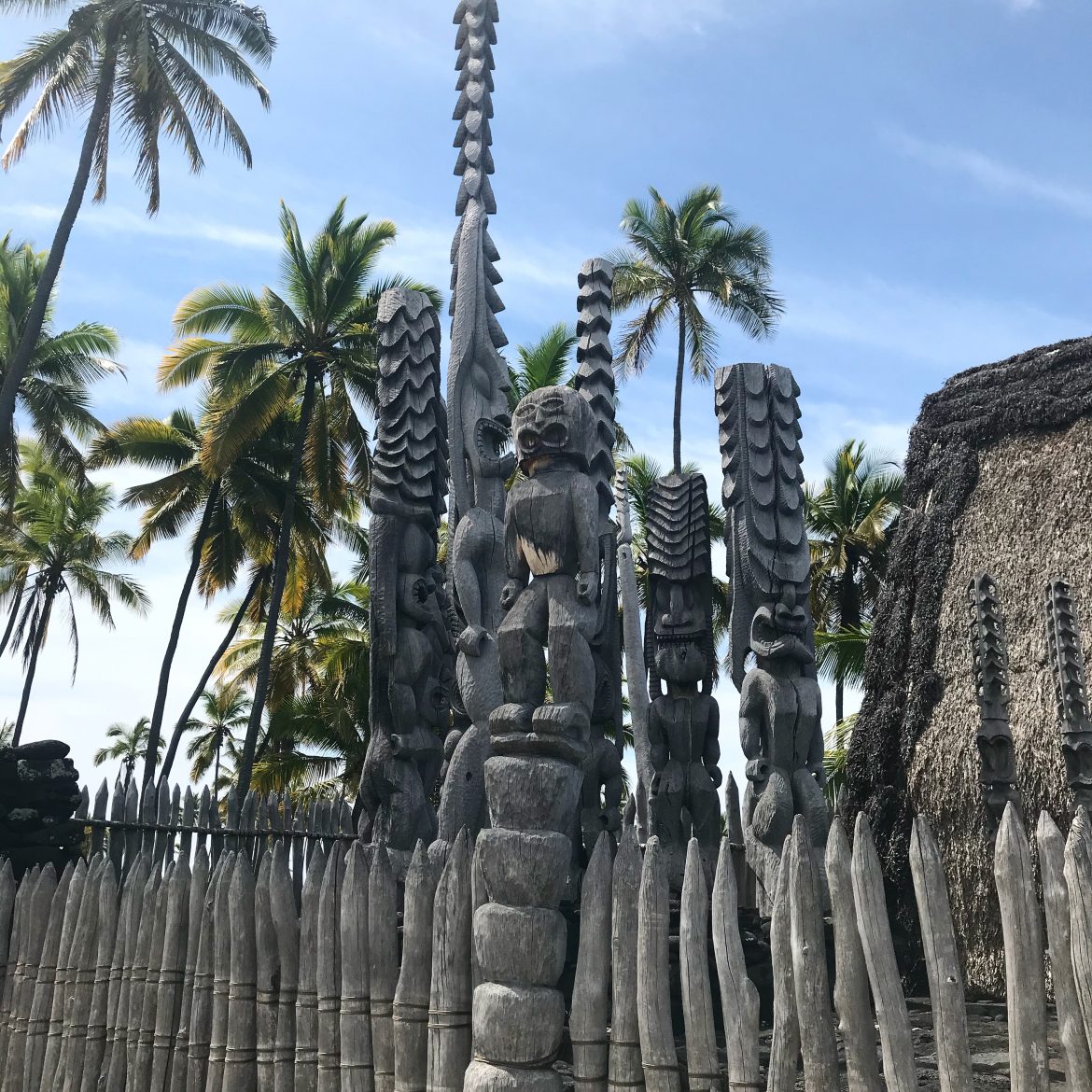
Marking the divide between the refuge and the Royal Grounds is the National Park’s most famous structure, the Hale o Keawe, probably first erected around 1700 although renewed many times due to the weather. This thatched wooden building is the royal mausoleum housing the bones of 23 royal chiefs, ali’i. Wooden images surrounding the mausoleum are Hawaiian gods.
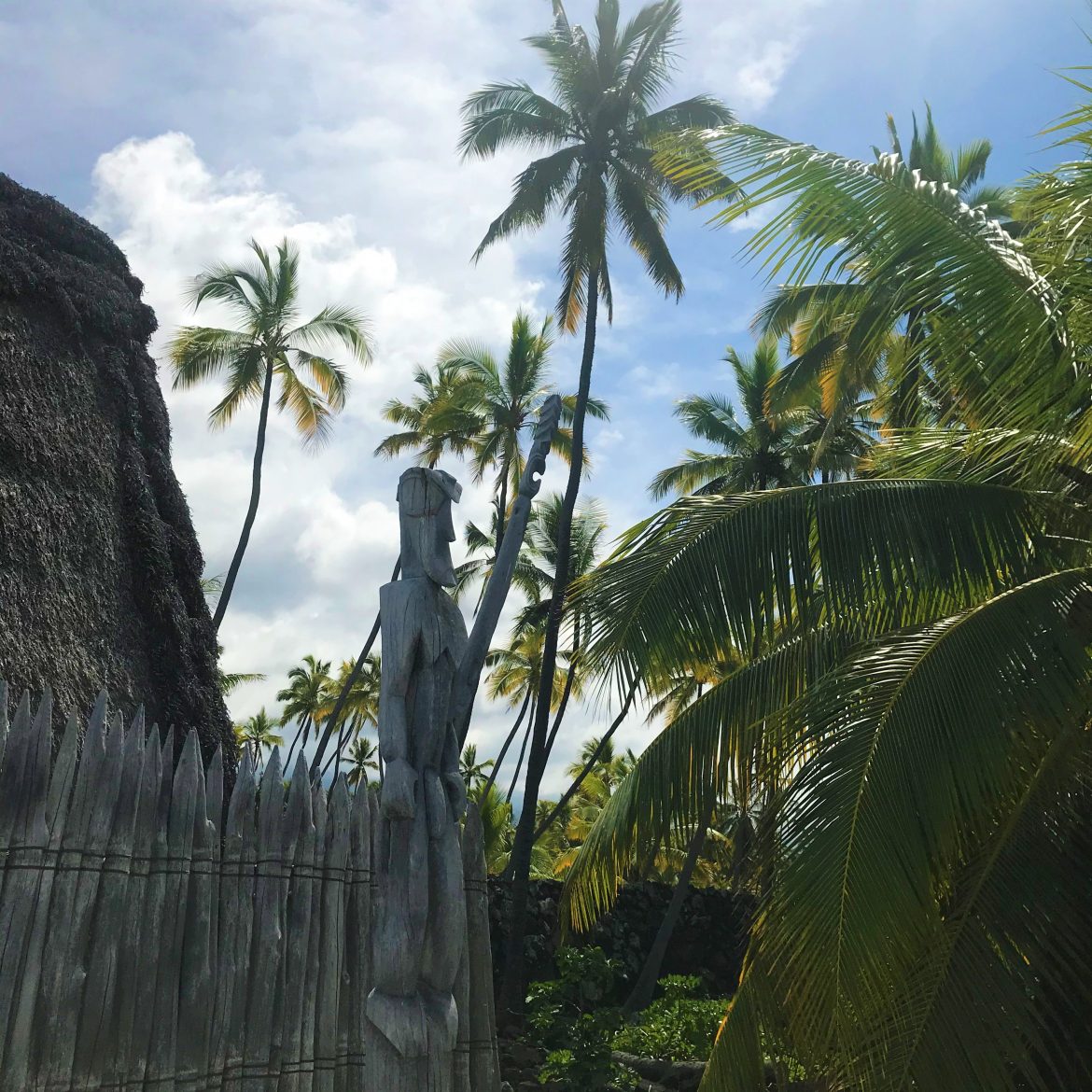
The Royal Grounds were a place of ceremony, negotiations, and pleasure with fresh fish from the royal fishponds in the complex, board games played with black and white pebbles, and sledding down a lava ramp slicked with nut oil, leaves and grass. It must have been fun.
The National Park is unusual in that while the NPS maintains the physical structures, Native Hawaiians perpetuate ancestral traditions as caretakers and cultural practitioners. A perfect example, and a few minutes I will never forget, arose as I returned to the park entrance: I could hear a mallet tapping on wood and paused to see a young man in a loincloth sitting cross-legged on the ground under the shade of a thatched hut used by native artisans. As I watched him work on a sculpture another young man wearing the standard Hawaiian outfit of tee shirt, shorts and flipflops, and accompanied by two young women, walked up to the hut’s entrance. He began to ever-so-softly chant melodic words. Was it a song of praise, a hymn to the sun, one of greeting? I don’t know, but the artisan responded with a similar ethereal chant before rising to embrace his visitor.
I was an unwitting interloper standing on soft sand amid rustling palms experiencing a tiny window into an ancient and complex culture that continues to exist despite the inroads of the subsequent arrivals since American sugar barons engineered the takeover of the islands in 1893. I moved on to avoid intruding further into this fleeting moment of ancient Hawaii.
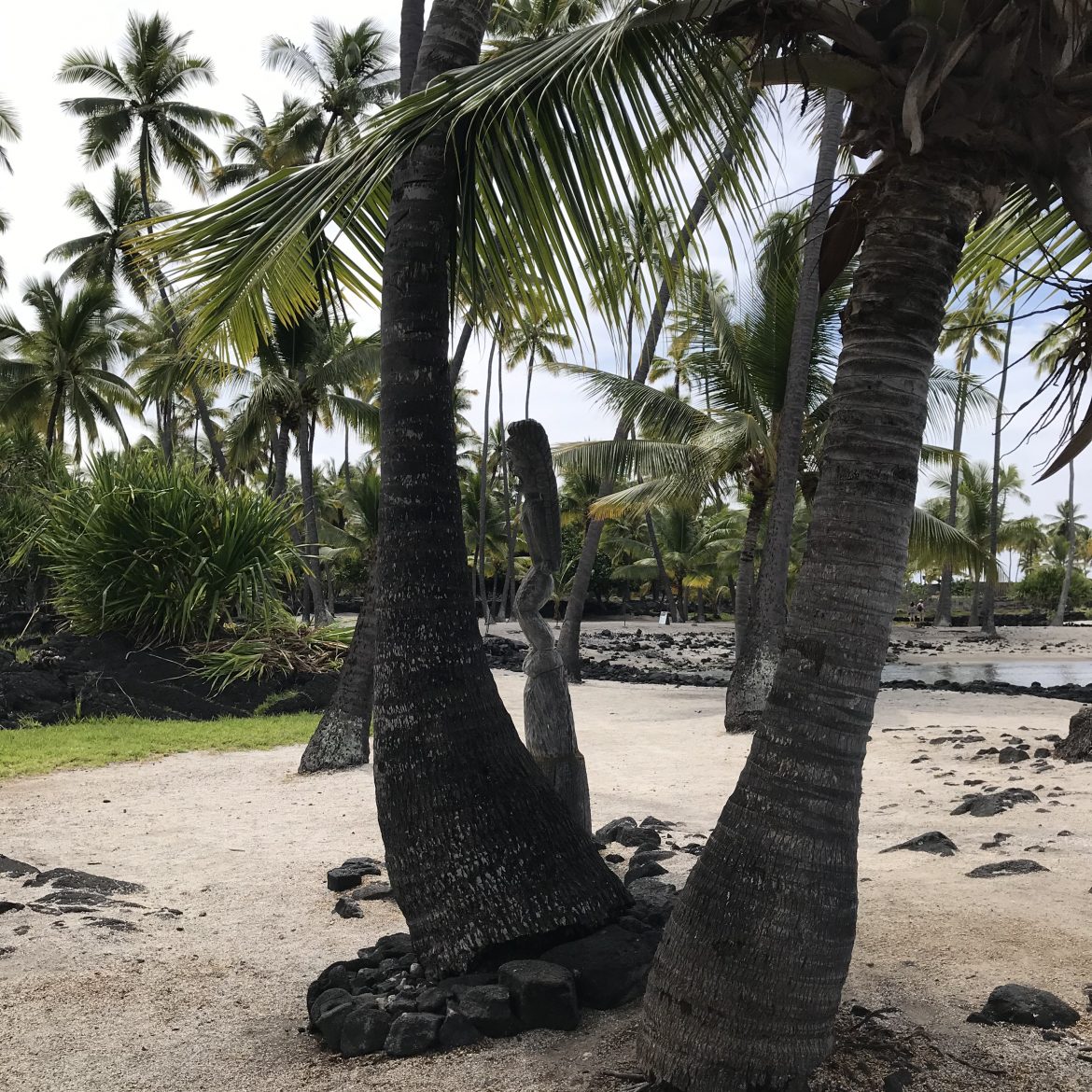
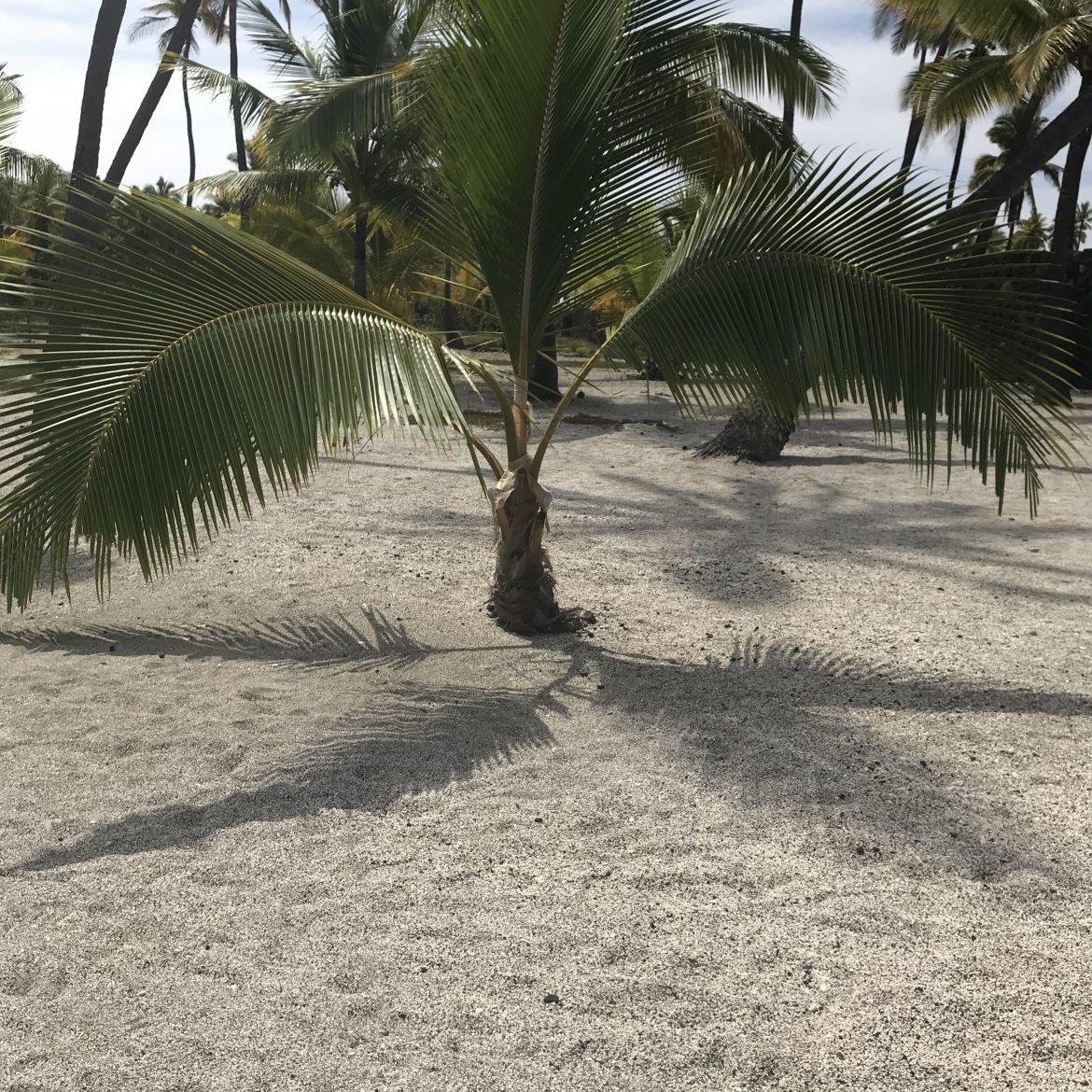
All photos copyright Judith Works




Kathryn
Wonderful story. Wish I was there now!
judithworks
Yes!!!!!
Vivian Murray
Thank you for the interesting historical info Judith. When I visited there almost 25 yrs ago, I knew very little about the historical and spiritual relevance. Loved your eavesdropping experience, too.
judithworks
I was very fortunate to have had that experience indeed.
Susan
I always love reading your posts, Judith. Insightful & beautifully written too.
judithworks
Thanks so much – I’m glad you enjoy them.
Mindy Halleck
I do love how Hawaii has cultural caretakers of their rituals and traditions, like on Oahu at the Polynesian Cultural Center.
judithworks
Yes – there is so much to learn.
Behind the Story
Thank you for the Hawaiian trip far from the crowds of tourists.
I’m glad the Hawaiians have been serious about remembering and preserving their heritage. It’s not easy to do in a culture that lives close to the earth. They have lived a sustainable lifestyle, which by definition leaves little behind for anyone to dig up or climb. You’re a great tour guide, Judith.
judithworks
I think most native Hawaiians are determined to maintain their culture and we’re the better for it.